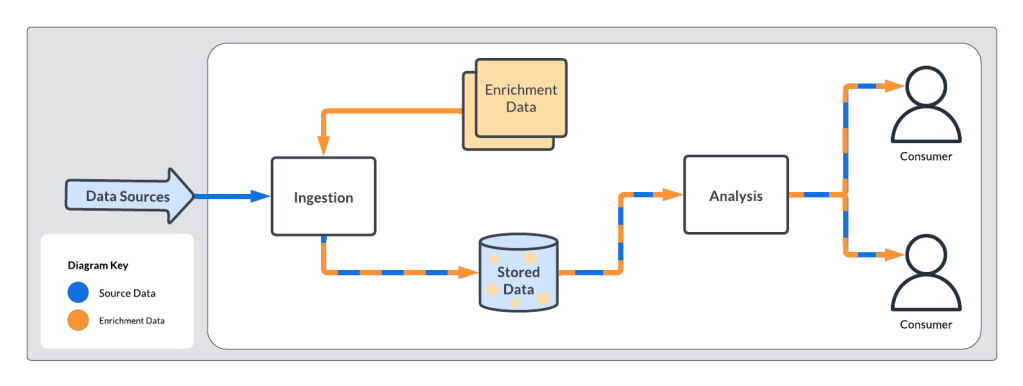
By Kristina Fronczyk, Emily Collier, and Scott Nyberg
The fossil fuels sector is largely linked to high carbon footprints and greenhouse gas emissions. However, the tech sector too plays a major role in energy usage and carbon emissions — projected to account for up to 20% of global energy demands by 2030.
Diving deeper, data centers are major culprits, using over 205 terawatt hours of electricity each year. To put that into perspective, this exceeds the energy consumption of entire countries like Taiwan, Ireland, and Denmark.
Addressing this urgent issue, Salesforce remains committed to helping the planet. We are actively reducing energy usage and carbon emissions in data centers by optimizing and reducing countless servers, keeping in line with the company’s core value of sustainability and pledge to cut emissions in half by 2030.
The company will accomplish this by relying on automation to expedite server decommissioning. The Salesforce Decommissioning Program (SDP) team leads the charge on this effort, aiming to retire more than double the amount of servers compared to the previous year.
What server decommissioning challenges did the SDP team face?
Prior to embracing automation, the team encountered several issues during the decommissioning process:
- A complex, 16-step manual decommissioning process increased the probability for human error
- Lack of visibility into the project’s progress
- Manual intervention and meticulous investigation of each decommissioning failure case
- Inefficient and human-centric workflows hindered scalability, resulting in prolonged energy consumption and a negative carbon impact
In early 2022, SDP faced its biggest scaling challenge yet: Decommissioning 40,000 servers, a massive increase from the previous year’s 16,000. To ensure the prompt removal of identified servers from the network, the team turned to the Autonomous Control Plane (ACP), leveraging the power of automation.
How does ACP help the team scale their decommissioning?
ACP automates data center infrastructure lifecycle management, ensuring SDP can scale operations in a safe, secure, predictable, and observable way. ACP executes continuous and incremental changes, enhancing trust by driving the safe and seamless removal of hosts from the network. Ultimately, ACP’s automation reduced decommissioning manual steps by over 80%, freeing engineers for other critical projects.

The chart shows that automation increases the velocity of server decommissioning, leading to the faster powering off of these energy-hungry machines.
And by reducing the duration a server remains on the network, the team decreased the need for ongoing patching while servers remained in the backlog, thus conserving energy resources and reducing Salesforce’s carbon footprint.
How does ACP enable the team to keep decommissioned servers offline?
To prevent decommissioned servers from accidentally returning to the network, ACP automatically disconnects them from the production network prior to shutdown, eliminating lengthy manual procedures that are susceptible to human error.
The team also harnesses ACP’s built-in safety net — a five-day grace period — enabling them to reverse the decommissioning process and swiftly reinstate hosts to the production VLAN if necessary.
How did the team calculate ACP’s impact and what were the results?
The team conducted a detailed carbon impact analysis by drawing data from Salesforce CRM Analytics dashboards that tracked and managed decommissioning KPI data, as well as by examining manually-computed DC energy and carbon data.
This enabled them to compare energy and carbon usage prior to leveraging automation with the streamlined post-automation process. The results were impressive, highlighting an extraordinary decrease in carbon emissions.
The shift towards automation resulted in significant energy conservation, saving 10,475 megawatt-hours of energy from April 2022 to July 2023, equivalent to powering 83 U.S. households for a year. Salesforce expects these savings to continue growing for many years due to the ongoing impacts of the automation.

Additionally, automation led to a reduction of 3,506 metric tons of carbon dioxide emissions, removing the need for 15,336 wooded acres to annually absorb that much CO2 from the environment.
Beyond operational efficiency, this accomplishment paves the path for Salesforce to achieve its sustainability goal of halving carbon emissions by 2030. In a world where ecological consciousness is paramount, these results show where business success and environmental stewardship seamlessly converge.
Learn more
- To learn how Salesforce is reducing the carbon footprint of software, read this blog.
- Stay connected — join our Talent Community!
- Check out our Technology and Product teams to learn how you can get involved.






